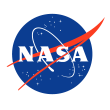NASA to Jumpstart Satellite Servicing Industry with Technology Transfer

NASA's Goddard Space Flight Center to host first Satellite Servicing Technology Transfer Industry Day on April 19th
April 5, 2017 - The global satellite market is massive, and like our universe, expanding every day. There are currently over 1,400 active satellites in space, and in 2015 there were a total of 86 orbital launches worldwide. Artificial satellites have been beneficial for humankind from enabling communications, to studying the earth, to allowing us to learn about the universe itself. However, launches are expensive and in an average year, several billion dollars' worth of satellites are retired when their fuel supply is exhausted, or when repairable issues deem them inoperable.
Rather than continuing to launch new satellites when previous ones run out of propellant or run into functionality issues, it simply makes sense to fix, refuel, or upgrade them to address these issues. The market and need for satellite servicing is clear, and now, the technology is avaliable to make it happen.
"The question is no longer whether or not robotic servicing will become a reality, but rather when it will happen," said Ben Reed, deputy division director of the Satellite Servicing Projects Division (SSPD) at NASA's Goddard Space Flight Center in Greenbelt, Maryland, adding that, "NASA intends to develop and mature all the necessary technology to enable this reality, then transfer that knowledge to domestic companies."
OSAM-1 will develop specialized technologies essential to executing a servicing mission: an autonomous navigation system, avionics, dexterous robotics, sophisticated tools, and a propellant transfer system.
NASA is developing technologies to robotically service a satellite in low-Earth orbit, marking the first time a servicing satellite will rendezvous with and grasp a client satellite that was not designed to be serviced--all without the involvement of humans.
While NASA has worked to develop servicing technologies and perfect them for use, it does not intend to be the only entity servicing satellites. A critical component of NASA's goals for satellite servicing is a plan to transfer the technologies in parallel with the development and execution of this mission, to establish a new domestic servicing industry.
SSPD's first Technology Transfer Industry Day, scheduled for April 19, 2017, will continue the momentum for NASA's plan to enable a new commercial satellite servicing industry. This technology transfer will be accomplished largely through a series of NASA-hosted Industry Days (approximately two per year) starting in April and continuing through mission operation. Additional measures that are part of the Technology Transfer Plan include workshops, access to facilities and portfolios, and meetings. Information about the Technology Transfer Plan, originally released on August, 16, 2016, has recently been updated to include additional details and address inquiries.
NASA understands that competition is vital to any healthy market, so in an effort to build a strong domestic, commercial satellite-servicing industry, all interested domestic entities will have equal access to the OSAM-1 technology NASA is developing. The resulting industry could potentially provide the U.S. government with cost-effective options for meeting future mission needs while also bolstering the domestic economy.
In addition to OSAM-1, NASA's SSPD is working on other satellite servicing technology demonstration projects such as Raven and Robotic Refueling Mission (RRM), as well as cooperative servicing aids which, when incorporated in satellites, can make them more easily serviceable. Technologies from these efforts will also be available for transfer to domestic commercial entities.
Interested U.S. companies, contact mary.g.reph@nasa.gov for more information about attending upcoming NASA Satellite Servicing Industry Days.
By Vanessa Lloyd
NASA's Goddard Space Flight Center, Greenbelt, Md.




